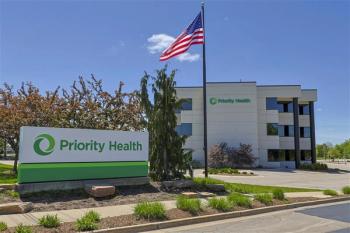
UPMC’s eyeVan Expands Accessible Eye Care by Addressing Health Equity Barriers

In this interview with Katie Cecconi, community service program coordinator at the UPMC Vision Institute, we learn more about the institute’s mobile eye care initiatives and how its services are working to overcome care equity gaps.
In February of 2023, the Brother’s Brother Foundation donated to the UPMC Vision Institute a mobile eye clinic van fully outfitted for complete eye exams that is a student-run initiative. In this interview with Katie Cecconi, community service program coordinator at the UPMC Vision Institute, we learn more about the institute’s mobile eye care initiatives and how its services are working to overcome care equity gaps.
“We want to make sure that we're centering those patient populations who have been historically disadvantaged in our work, to be able to get them the preventive care that they need and the patient education that they need so that we can build up health literacy and help folks advocate for themselves in the very complex and confusing medical system," Cecconi says.
Transcript
Please tell us about the UPMC eyeVan and your eye care initiatives.
My name is Katie. I'm the community service program coordinator at the UPMC Vision Institute. I work with our student-run mobile eye clinic, which is called the
It's been great. We're able to partner with people like
For clients who require more advanced eye care, can you explain the handoff process?
The images that we're taking today are going to be sent to Jake Waxman, MD, PhD; he's one of our primary ophthalmologists doing community service. He'll look at the images and then identify if people need any kind of follow-up. If they do, they'll send that information to me [and] we'll send it to the patient's PCP [primary care physician] if we have that information. And we'll reach out directly to the patient to make sure that they get a follow-up appointment scheduled. If they're coming back to the UPMC Vision Institute, we have a patient navigator who can help folks navigate transportation issues, any kind of other barrier to care—she's there to help folks with that so that we can make it accessible as much as possible.
It's an event-by-event basis. Today, we're focusing on screening. So, if folks need glasses or need any kind of follow-up care, we're going to send them back to either the Vision Institute or whoever their primary eye doctor is. In other situations, we have had events where we'll do refraction. So in that case, we can get folks free eyeglasses, reading glasses, through the Essilor Foundation, their
Why is it so important to address health equity?
There are so many groups of people who have historically been marginalized, disadvantaged in any number of ways, and those show up in lots of different ways, too. For example, folks who are Black or African American have higher rates of glaucoma, diabetic retinopathy. So we want to make sure that we're centering those patient populations who have been historically disadvantaged, in our work, to be able to get them the preventive care that they need and the patient education that they need so that we can build up health literacy and help folks advocate for themselves in the very complex and confusing medical system.
Newsletter
Stay ahead of policy, cost, and value—subscribe to AJMC for expert insights at the intersection of clinical care and health economics.





























































